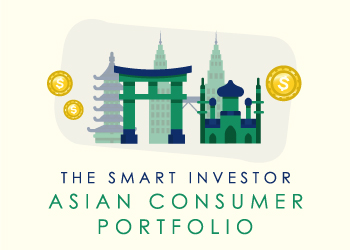
09 Oct Get Smart: Investing In The Next Big Thing
Cast your mind back to the 1960s. You can’t? I’m not surprised because some of you probably weren’t even born then.
But let me take you on a whistle-stop tour down memory lane….
…. Singapore in the ‘60s was an idyllic but, nevertheless, basic place to live. The single-runway international airport was at Paya Lebar. The best satay could be found on a dusty cul-de-sac off Beach Road, the best paper-wrapped chicken was served in a bucolic eatery in Clementi, and….
…. excitement included waiting for a pasar malam or night market to open. Enjoyment was also wading waist-deep in water along parts of Bukit Timah Road during the monsoon season. It was waiting for the TV test card to disappear before Channel 5 started broadcasting in black & white for the day.
Life was simple.
But we have come a long way since then, thanks to economic progress that has transformed our simple lives by raising our standard of living. In the 1960s, the economic output per person in Singapore was US$428. Today, it is US$64,581….
…. and let’s not forget that there were fewer than two million people in Singapore then. Today, Singapore’s economic output is shared between a population of 5.7 million. We have certainly made considerable headway in six decades.
So, if you could go back in time, what would you have done in the 1960s knowing what you now know about Singapore? What would you have invested in?
Filling our boots
I would have filled my boots with consumer-facing stocks because it is ultimately household spending that drives an economy – slowly at first, but eventually it is the main generator of economic growth.
And therein lies the key to investing, namely, to look for companies that can tap into the rich vein of consumer spending.
Of course, we can’t turn back the clock. But we can do the next best thing to reversing the sands of time. We can learn from what Singapore has been able to achieve and apply that knowledge to other parts of Asia.
Developing Asia
We shouldn’t forget that many of our neighbours are still emerging economies. In terms of their development, they are today where Singapore was 10, 20, 30 or maybe even 60 years ago. Just take a trip (when we are eventually allowed to travel) to Myanmar, Cambodia, Thailand, Malaysia, and Indonesia to see for yourself.
From an economic perspective, a country’s GDP per head of population is a good-enough proxy to determine how developed it is. It’s not a perfect gauge, given the unequal distribution of wealth within a country. But it will do.
Singapore is up there in the top left-hand corner of the chart. Hong Kong is not too far behind. Macau is also there because of its disproportionately small population of just 670,000 compared to the massive gaming wealth that its casinos has attracted.
But there is a large swathe of countries clustered around the bottom right-hand quadrant….
Overtaking Singapore
…. They could, one day, be where Singapore is today. Some might even overtake Singapore, if not for their considerably larger population.
Collectively, there are 640 million people (excluding China) who live in those countries. If we include China, it represents as much as a quarter of the world’s population.
That is a lot of mouths to feed, a lot of bodies to clothe, and a lot demand for service companies to satisfy. There are also lots of opportunities for wonderful companies to tap into.
Some of these companies are already there. They already have a proven track record of success in their home markets. But they are eager to grow through overseas expansion….
Household names
These companies are familiar household names in their home markets. But controlled and targetted expansion in Asia could propel their top line revenue and turbo-charge their bottom lines profit.
It is indeed an exciting time to be in Asia. It is little wonder that US, UK, and European companies are keen to be a part of what Asian companies already know – that developing Asia is where it is happening.
It is the next big thing.
And as per capita income continues to rise and disposable income starts to increase, Asian consumers could be the next powerhouse that drive global consumption.
Now what?
I want to be around to see the living standards of consumers in developing Asia rise to Singapore’s level. I also want to participate in that growth, not as an idle by-stander, but as an active investor.
What I don’t want to happen is to look back in a few years’ time with regret and say that I should have bought into those companies earlier….
…. Could have, should have and would have are some of the worst past-modal verbs in the English language for any investor.
Instead, I want to build a portfolio of some of the world’s best companies now that will be at the forefront of the Asian consumer expansion.
Join me as we take this exciting journey.
If my journey into property through Kuo’s Income Portfolio was exhilarating, and my voyage into Malaysia through Malaysian Money Machine was thrilling, this next expedition into Asian consumer territory could be breathtaking.
Access to my portfolios are by invitation only. If you’re ready, click HERE to receive your special invitation. We close tomorrow, 10 Oct, at midnight sharp… and then I’ll embark on the journey of a lifetime. I hope you’ll join me.
